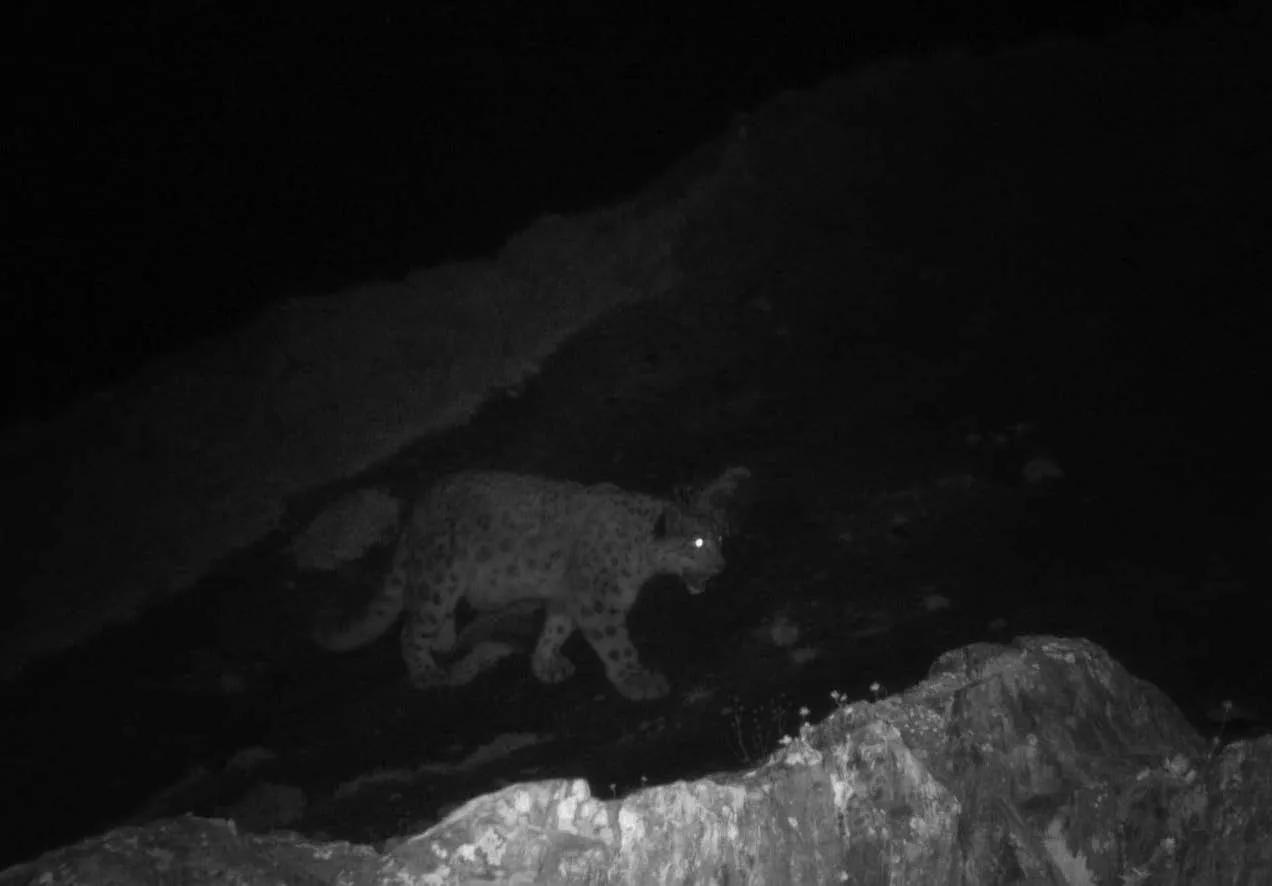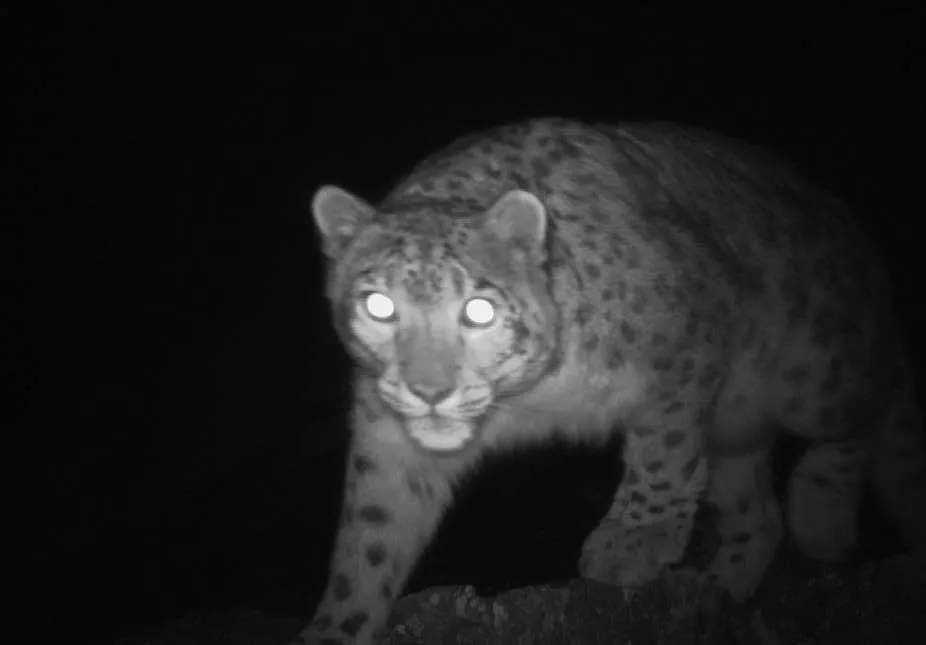Srinagar: For the first time, the snow leopard, an endangered animal, has been spotted in the upper reaches of Kashmir which may give a significant boost to the efforts aimed at the conservation of the species.
J&K’s Department of Wildlife Protection and Programme Manager of National Conservation Foundation (NCF) Munib Khanyari in a statement issued here said that the Department of Wildlife Protection had been conducting surveys with partner NGOs to understand the presence and abundance of snow leopards under the Snow Leopard Population Assessment of India (SPAI) project funded by the Ministry of Environment Forests and Climate Change.
It said that this iconic and culturally treasured great cat was a good indicator species as it quickly reacts to habitat disturbances and its successful conservation requires sustainable long-term systemic solutions to the threats impacting the quality of habitats.

“Various teams have been conducting surveys across the near 12,000 sq km potential snow leopard of J&K for a few years now covering Gurez, Thajwas, Baltal-Zojila, Wurwun, and Kishtwar landscapes. There is extremely limited evidence of snow leopard occurrence across J&K,” the statement said.
It said that recently in a historic revelation, partners on this project, researchers from Nature Conservation Foundation (NCF) recorded images of the snow leopard in the upper Baltal-Zojila region of Kashmir.
The statement said that the team involved in the camera trapping was headed by Munib Khanyari and accompanied by Aashiq Dar of Tangmarg, Baramulla, Aijaz Raina of Sarbal, Sonamarg, Tanzin Thuktan, Rinchen Tobge, and Kesang Chunit of Kibber, Himachal Pradesh.
It said that they were supported extensively by the staff of the Department of Wildlife Protection and the research associates and supported by Suresh Kumar Gupta, IFS Principal Chief Conservator of Forest (Wildlife) and Chief Wildlife Warden and Regional Wildlife Warden – Kashmir Rashid Yahya Naqash.
The statement said that this finding brings renewed hope to Kashmir and its high-altitude regions, as the presence of the snow leopard can be used as a conservation flagship to address high-mountain development issues for people and the environment.
“In the coming days, more such findings from the ongoing surveys are expected from these landscapes. The camera trapping exercise also revealed other important and rare species such as Asiatic Ibex, Brown Bear and Kashmir Musk Deer besides incredible information regarding other biodiversity components of such habitats, interactions, and threats will be documented in the shape of a final report,” the statement said.
Usually endemic to Ladakh, the snow leopard (Panthera uncia) has been listed as vulnerable on the red list of the International Union for Conservation of Nature (IUCN) given its large-scale poaching.
Talking to Greater Kashmir, Regional Wildlife Warden, Kashmir, Rashid Yahya Naqash said that there were also reports regarding similar camera trap results recorded from Kiyar Nallah of Kishtwar High Altitude National Park.
He said that presently the Department of Wildlife Protection was undertaking this exercise in all the potential landscapes of J&K in collaboration with NGOs and academic institutions like NCF, Wildlife SoS, Sher-e-Kashmir University of Agricultural Sciences and Technology, Kashmir (SKUAST-K), and others besides engaging research associates involved as field staff and volunteers.
Naqash said that under the SPAI, for the first time extensive work to establish the presence and its abundance was being carried out in the identified grids.
He said camera-trapping interview-based occupancy surveys and genetic-based studies were also covered under this project.
“First time in J&K we have been able to establish its presence in J&K covering both the regions,” Naqash said.
He said that J&K was now on the global snow leopard map. Programme Manager NCF, Munib Khanyari told Greater Kashmir that the recent finding brings renewed hope to Kashmir and its high-altitude regions, as the presence of the snow leopard could be used as a conservation flagship to address high-mountain development issues for people and the environment.







